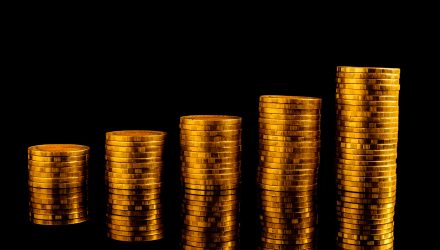After seeing some of the largest outflows among any US-listed exchange traded funds last year, the iShares iBoxx $ High Yield Corp Bond ETF (NYSEArca: HYG) and the SPDR Bloomberg Barclays High Yield Bond ETF (NYSEArca: JNK) are gathering assets at impressive clips early in the new year.
While some investors are renewing their affinity for high-yield bond ETFs, data suggest others remain leery of the asset class.
“The $14.8 billion iShares iBoxx High Yield Corporate Bond exchange-traded fund absorbed nearly $1.8 billion last week, the highest amount ever, as U.S. junk-bond spreads tightened the most in 10 yeas,” reports Bloomberg. “That’s after the market lost more than 2 percent in 2018, notching its worst performance since 2015 as stocks and oil were pummeled in December.”
Falling oil prices, rising interest rates and concerns about deteriorating credit quality were among the factors that chased investors from high-yield corporate bonds and the related exchange traded funds in 2018. Some data points suggest investors are again embracing junk bond ETFs.
It’s a clear sign that the risk-off sentiment that started in October is affecting the high-yield sector that was flying high during the midst of the extended bull run in the capital markets–a time when investors were willing to forego the extra risk in order to achieve the higher yields.
On The Other Side
JNK seeks to provide investment results that correspond generally to the price and yield performance of the Bloomberg Barclays High Yield Very Liquid Index, which is designed to measure the performance of publicly issued U.S. dollar denominated high yield corporate bonds with above-average liquidity. HYG tracks the investment results of the Markit iBoxx® USD Liquid High Yield Index, which is comprised of high yield U.S. corporate bonds that have less than investment-grade quality.

